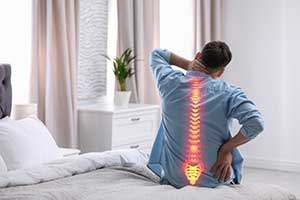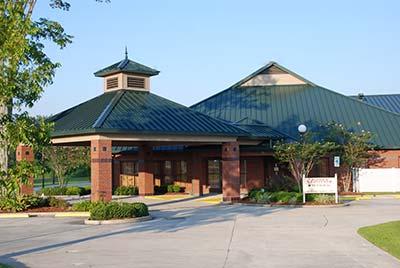Herniated Disk and Sciatica Pain Treatment Pain Q & A's
What is sciatica?
Sciatica is radiating pain in the sciatic nerve. This thick and lengthy nerve covers the distance from your hip to below your knee on both sides of your body.
When your sciatic nerve gets pinched within your spine, also called a pinched nerve, it triggers symptoms that usually include sharp pain that speeds down your leg. You can have pinched nerves in your cervical spine, around the neck area, as well.
What are bulging and herniated discs?
Bulging and herniated discs are two common reasons for back and neck pain.
Bulging disc
A bulging disc refers to the outer disc layer pushing out between the vertebrae it cushions. This is a common effect of wear and tear as you age. Discs often bulge out in an uneven pattern, with anywhere from 25-50% of the disc's outer layer pushing out.
Herniated disc
A herniated disc, also known as a ruptured disc, has a fissure in its outermost cartilage layer. The disc's inner jellylike material protrudes, often pushing it out quite a bit more than a bulging disc. Bulging and herniated discs are two common reasons for sciatica pain. They can cause pain by triggering inflammation or through direct sciatic nerve pressure.
Because disc damage and other conditions like spinal stenosis can both cause sciatica pain, they’re often mistaken for the other. But spinal stenosis involves shrinking rather than expanding tissue. It means your spinal canal is too narrow to comfortably contain the nerves within.
What is the best herniated disc and sciatica treatment?
The best herniated disc and sciatica treatment depends on where your pain occurs, what caused it, and how severe your pain is. Bulging and herniated discs can occur anywhere along your spine, while sciatica pain occurs only in the lower body.
No matter where the pain is, deactivating the nerve that’s relaying pain signals to your brain is often a good solution. The Headache & Pain Center,amc team may recommend epidural steroid injections for chronic pain related to disc damage, spinal stenosis, and other causes.
An epidural steroid injection goes into the outer part of your spinal canal, where the nerve roots are. The injection targets specific nerve roots, delivering an anesthetic to deaden pain and a steroid to fight inflammation.
The Headache & Pain Center,amc team is ready to take action against your pain, so don’t wait to ask for help. Call the office nearest you, or use the online scheduler now.



